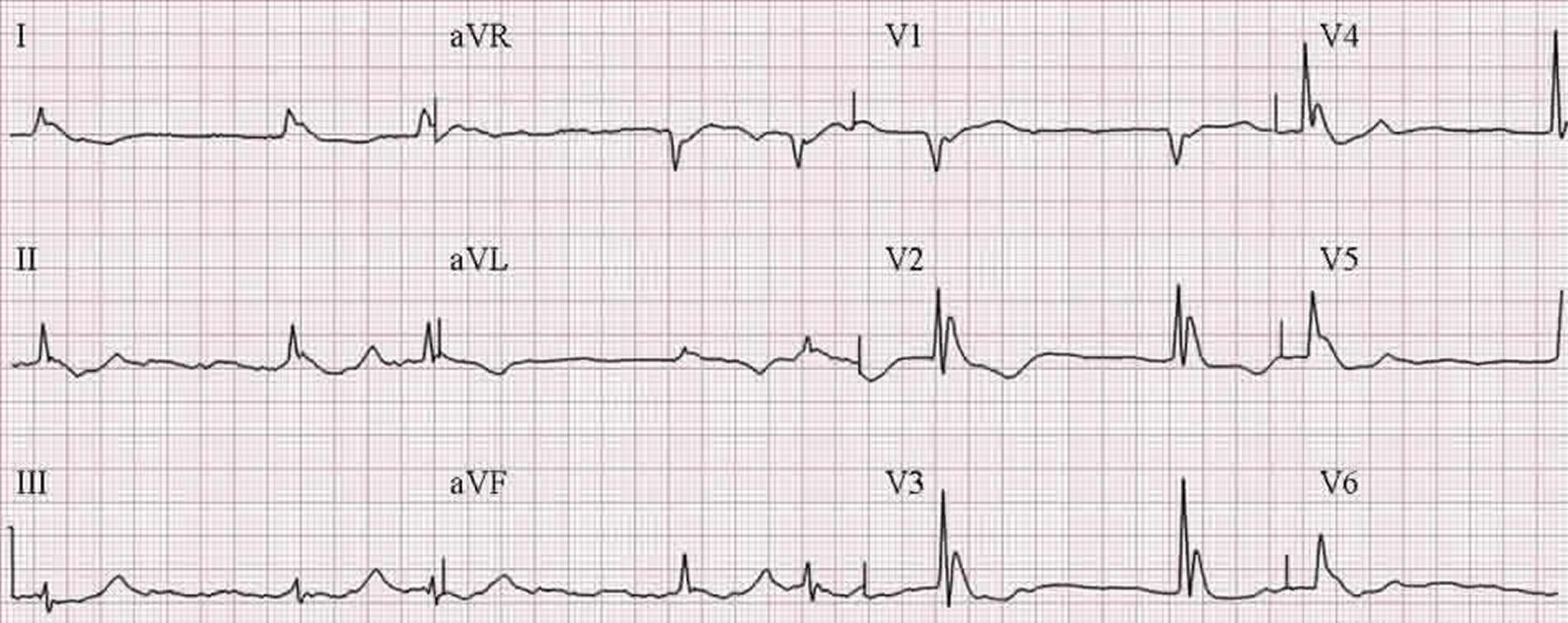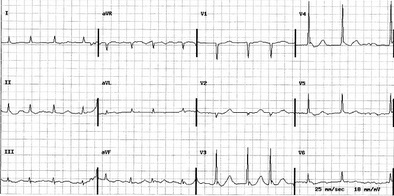Hypothermia: Difference between revisions
Varun Kumar (talk | contribs) No edit summary |
m (Robot: Automated text replacement (-{{SIB}} + & -{{EH}} + & -{{EJ}} + & -{{Editor Help}} + & -{{Editor Join}} +)) |
||
| Line 162: | Line 162: | ||
{{Consequences of external causes}} | {{Consequences of external causes}} | ||
[[Category:Signs and symptoms]] | [[Category:Signs and symptoms]] | ||
[[Category:Emergency medicine]] | [[Category:Emergency medicine]] | ||
Revision as of 16:13, 9 August 2012
For patient information, click here
Template:DiseaseDisorder infobox
|
WikiDoc Resources for Hypothermia |
|
Articles |
|---|
|
Most recent articles on Hypothermia Most cited articles on Hypothermia |
|
Media |
|
Powerpoint slides on Hypothermia |
|
Evidence Based Medicine |
|
Clinical Trials |
|
Ongoing Trials on Hypothermia at Clinical Trials.gov Clinical Trials on Hypothermia at Google
|
|
Guidelines / Policies / Govt |
|
US National Guidelines Clearinghouse on Hypothermia
|
|
Books |
|
News |
|
Commentary |
|
Definitions |
|
Patient Resources / Community |
|
Patient resources on Hypothermia Discussion groups on Hypothermia Patient Handouts on Hypothermia Directions to Hospitals Treating Hypothermia Risk calculators and risk factors for Hypothermia
|
|
Healthcare Provider Resources |
|
Causes & Risk Factors for Hypothermia |
|
Continuing Medical Education (CME) |
|
International |
|
|
|
Business |
|
Experimental / Informatics |
Editor-In-Chief: C. Michael Gibson, M.S., M.D. [5]; Associate Editor-In-Chief: Cafer Zorkun, M.D., Ph.D. [6]
Overview
Hypothermia is a condition in which an organism's temperature drops below that required for normal metabolism and bodily functions. In warm-blooded animals, core body temperature is maintained near a constant level through biologic homeostasis. But when the body is exposed to cold its internal mechanisms may be unable to replenish the heat that is being lost to the organism's surroundings.
Hypothermia is the opposite of hyperthermia. Because the words sound alike, they are easily confused.
Differential Diagnosis of Causes of Hypothermia
- End-stage liver disease
- Exposure
- Hypothyroidism
- Hypovolemic stroke
- Massive blood transfusion
- Sepsis
- Stroke
Stages in humans
Normal body temperature in humans is 37°C (98.6°F). Hypothermia can be divided into three stages of severity.
In stage 1, body temperature drops by 1-2°C below normal temperature (1.8-3.6°F). Mild to strong shivering occurs. The victim is unable to perform complex tasks with the hands; the hands become numb. Blood vessels in the outer extremities constrict, lessening heat loss to the outside air. Breathing becomes quick and shallow. Goose bumps form, raising body hair on end in an attempt to create an insulating layer of air around the body (this is of limited use in humans due to lack of sufficient hair, but it can be useful in other species). Often, a person will experience a warm sensation, as if they have recovered, but they are in fact heading into Stage 2. Another test to see if the person is entering stage 2 is if they are unable to touch their thumb with their little finger; this is the first stage of poor muscle coordinaiton.
In stage 2, body temperature drops by 2-4°C (3.6-7.2°F). Shivering becomes more violent. Muscle mis-coordination becomes apparent. Movements are slow and labored, accompanied by a stumbling pace and mild confusion, although the victim may appear alert. Surface blood vessels contract further as the body focuses its remaining resources on keeping the vital organs warm. The victim becomes pale. Lips, ears, fingers and toes may become blue.
In stage 3, body temperature drops below approximately 32°C (90°F). Shivering usually stops. Difficulty speaking, sluggish thinking, and amnesia start to appear; inability to use hands and stumbling are also usually present. Cellular metabolic processes shut down. Below 30°C (86°F) the exposed skin becomes blue and puffy, muscle coordination becomes very poor, walking is nearly impossible, and the victim exhibits incoherent/irrational behavior including terminal burrowing or even a stupor. Pulse and respiration rates decrease significantly but a variety of tachycardias (ventricular tachycardia, atrial fibrillation) can occur. Major organs fail. Clinical death occurs. Because of decreased cellular activity in stage 3 hypothermia, the body will actually take longer to undergo brain death.
First aid
- If any symptoms of hypothermia are present, especially confusion or changes in mental status, the local emergency service should be immediately contacted.
- If the person is unconscious, check their airway, breathing, and circulation. Pulse check should take at least 45 seconds, as the heart rate may be extremely slow. If necessary, begin rescue breathing or CPR. If the victim is breathing less than 6 breaths per minute, begin rescue breathing.
- Take the person inside to room temperature and cover him or her with warm blankets. If going indoors is not possible, get the person out of the wind and use a blanket to provide insulation from the cold ground. Cover the person's head and neck to help retain body heat.
- Once inside, remove any wet or constricting clothes and replace them with dry clothing.
- Warm the person. Apply warm compresses or packs to the neck, chest wall, armpits and groin. If the person is alert and can easily swallow, give warm, sweetened, non-alcoholic fluids to aid the warming.
- Stay with the person until medical help arrives.
- Assume that you should obtain a doctor if the victim has been exposed for 24 hours or more.
- Do not use direct heat (such as hot water, a heating pad, or a heat lamp) to warm the person.
- Do not give the person alcohol - alcohol acts as a vasodilator, increasing blood flow to the body's extremities, and thereby increasing heat loss.[1]
- Do not rub the person's limbs because this may cause further tissue damage.
- Handle gently and with extreme care. Any rough handling of an extremely hypothermic person could cause their heart to stop.
Hospital treatment
In a hospital, warming is accomplished by external techniques (blankets, warming devices) for mild hypothermia and by more invasive techniques such as warm fluids injected in the veins or even lavage (washing) of the bladder, stomach, chest and abdominal cavities with warmed fluids for severely hypothermic patients. These patients are at high risk for arrhythmias (irregular heartbeats), and care must be taken to minimize jostling and other disturbances until they have been sufficiently warmed, as these arrhythmias are very difficult to treat while the victim is still cold.
An important tenet of treatment is that a person is not dead until they are warm and dead. Remarkable accounts of recovery after prolonged cardiac arrest have been reported in patients with hypothermia. This is presumably because the low temperature prevents some of the cellular damage that occurs when blood flow and oxygen are lost for an extended period of time.
Prevention
In air, most heat is lost through the head (one third of the body's heat);[2] hypothermia can thus be most effectively prevented by covering the head. Having appropriate clothing for the environment is another important prevention. Fluid-retaining materials like cotton can be a hypothermia risk; if the wearer gets sweaty on a cold day, then cools down, they will have sweat-soaked clothing in the cold air. For outdoor exercise on a cold day, it is advisable to wear fabrics which can "wick" away sweat moisture. These include wool or synthetic fabrics designed specifically for rapid drying.
Heat is lost much faster in water. Children can die of hypothermia in as little as two hours in water as warm as 16°C (61°F, 289K), typical of sea surface temperatures in temperate countries such as Great Britain in early summer. Many seaside safety information sources fail to quote survival times in water, and the consequent importance of diving suits. This is possibly because the original research into hypothermia mortality in water was carried out in wartime Germany on unwilling subjects. There is ongoing debate as to the ethical basis of using the data thus acquired.
There is considerable evidence, however, that children who suffer near-drowning accidents in water near 0°C (32°F, 273 K) can be revived up to two hours after losing consciousness. The cold water considerably lowers metabolism, allowing the brain to withstand a much longer period of hypoxia.
Appearance of the Patient
- Ascertain if the patient is intoxicated.
Vital Signs
- Core temperature (rectal temperature preferred)
Skin
- Careful attention paid to extremities and other possible areas of frostbite
Heart
- Bradycardia is generally present
Lungs
- Check for consolidation to rule out pneumnia
Abdomen
- Evaluate for signs of infection
Extremities
- Evaluate for frostbite
Neurologic
- Check for signs of confusion that led to exposure and overdose
Laboratory Findings
Electrolyte and Biomarker Studies
- Complete blood count (CBC)
- Blood urea nitrogen (BUN)/creatinine
- Calcium
- Liver function tests
- Coagulation studies
- Thyroid stimulating hormone
- Free T4
- Blood cultures
- Urine cultures
- Arterial blood gases
- Glucose
- Creatinine kinase
- Urinalysis
- Electrolytes
Electrocardiogram
- Osborn waves may appear on the ECG for temperatures less tahn 91.4 degrees Fahrenheit (33 degrees Celsius)
- There is a slowing of the sinus rate
- Prolongation of the PR interval and the QTc
- Prolongation of the QRS is often due to the appearance of the J wave
- The most typical finding is the appearance of the Osborne J wave, an extra deflection between the QRS complex and the T wave.
- Consistently found when the temperature falls below 25 degrees Centigrade.
- More prominent in the left precordial leads
- Increases in size with decreasing temperature
- Caused by a current of injury, delayed ventricular depolarization, or early repolarization
- About 50 to 60% of these patients develop atrial fibrillation. VF may also occur.


Chest X Ray
- Chest X-ray should be obtained for suspected sepsis
MRI and CT
- CT scan of head should be obtained if there is clinical suspicion of stroke
Treatment
- Passive rewarming to prevent further heat loss
- Active external rewarming
- Active core rewarming
- Treat underlying etiologies
- Fluids
Acute Pharmacotherapies
- Levothyroxine
- IV thyroxine
- IV hydrocortisone
- Antibiotics
- Vasopressors
- Positive inotropes
- Crystalloid solutions or blood products
Indications for Surgery
- Profound hypothermia can be an indication to be placed on extracorporeal circulation (bypass pump).
Medically induced
Paradoxical undressing
20% to 50% of hypothermal deaths are associated with, or even caused by, a phenomenon known as paradoxical undressing. When this occurs, the hypothermic victim becomes seriously confused and starts discarding clothing they have been wearing, a counter-productive action which increases the rate of temperature loss.[3] There have been several published case studies of victims throwing off their clothes before help reached them. [4]
Rescuers who are trained in mountain survival techniques have been taught to expect this effect. However, the phenomenon still regularly leads police to incorrectly assume that urban victims of hypothermia have been subjected to a sexual assault.
One explanation for the effect is a cold-inducted malfunction of the hypothalamus, the part of the brain that regulates body temperature. Another explanation is that the muscles contracting peripheral blood vessels become exhausted and relax, leading to a sudden surge of blood (and heat) to the extremities, fooling the victim into feeling warm.
See also
- Hyperthermia
- Cryonics
- First aid
- Frostbite
- Heat escape lessening position
- Hibernation
- Mountain rescue
- Torpor
- Terminal Burrowing Behavior
- Thermoregulation
- Winter sport
- Brown adipose tissue allows babies higher chance of survival by converting fat into heat (from a Discovery Channel documentary on Survival)
References
Template:Consequences of external causes
cs:Podchlazení de:Hypothermie fi:Hypotermia he:קור (תסמין למחלה) it:Ipotermia nl:Hypothermie no:Hypotermi sv:Hypotermi uk:Гіпотермія